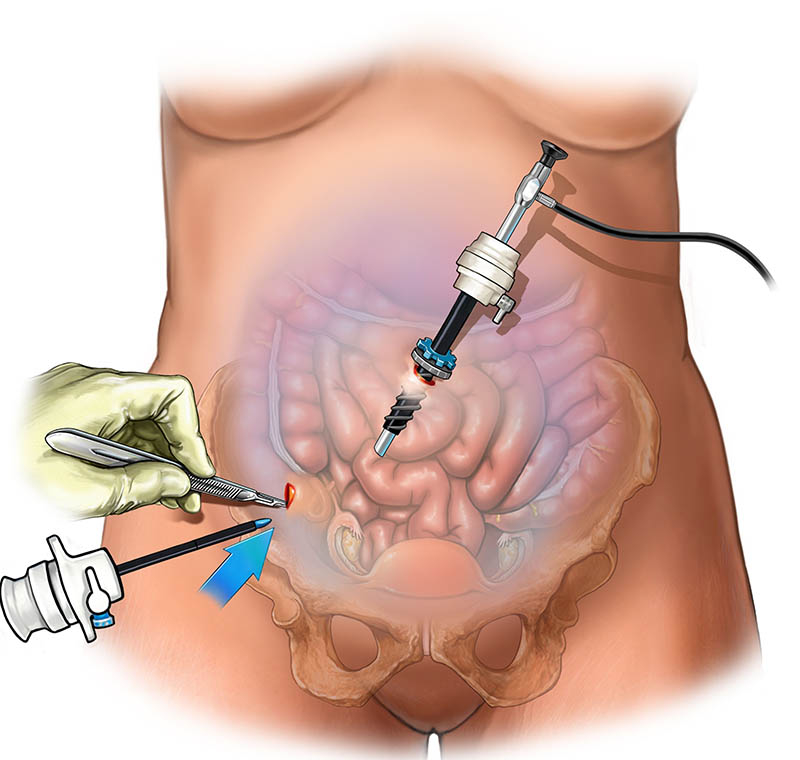Blocked fallopian tubes can be a significant barrier to conception. Laparoscopy provides a minimally invasive method to diagnose and treat these blockages, offering hope to many.
Understanding the Impact of Blocked Fallopian Tubes
Blocked fallopian tubes mean the eggs can’t travel from the ovaries to the uterus. This blockage is a notable cause of infertility and can be particularly troubling in regions like India, where having children is often an expectation. Many women face this challenge without knowing the reason behind their struggle to conceive.
In India, the prevalence of this condition contributes to high infertility rates. This issue affects numerous women and can lead to emotional distress and uncertainty about future family planning. Without proper diagnosis, this condition can remain hidden, causing continued frustration.
Diagnosing blocked tubes is critical. In the past, conventional methods were used, but they weren’t always effective or comfortable for patients. Techniques like HSG or hysterosalpingography involve inserting dye and taking X-rays to find blockages, but they can be uncomfortable and cause anxiety. Additionally, results are not always conclusive.
This is where modern methods like laparoscopy benefits for blocked tubes come into play. Early and precise diagnosis is essential for addressing this issue efficiently. Without it, many women may continue to struggle without knowing the cause. Fortunately, tubal blockage diagnosis through laparoscopy offers a more accurate picture of what’s happening inside, directly targeting the problem.
Understanding these challenges underscores the need for advancements in safe and effective diagnostics. Thanks to technology, we’re now turning to better solutions to help women overcome this condition and regain control over their reproductive health.
The Evolution of Laparoscopy: Revolutionizing Diagnosis & Treatment
Laparoscopy, a modern surgical procedure, began making significant strides in medical fields many years ago. Initially, its use in diagnosing and treating blocked tubes was limited, but as technology improved, it became a game-changer.
Traditional surgery often meant large incisions and longer recovery. In contrast, laparoscopy uses small cuts—a patient-friendly choice with reduced complications. It’s less invasive, which means less pain and quicker healing.
The arrival of laparoscopy changed how blocked tubes are treated, presenting a more appealing alternative to older surgical techniques. The procedure uses a tiny camera to look inside the body, leading to more precise and accurate results.
This advancement didn’t just make operations easier but increased the fertility laparoscopy success rate. Women who undergo this method have a higher chance of conceiving afterward. With more accurate diagnoses through tubal blockage diagnosis through laparoscopy, the treatment can target the issues directly, leading to better outcomes.
Technological progress means this procedure is less daunting than before. Equipment has improved, and techniques continue to develop, ensuring that patients face fewer risks.
Today, laparoscopy is reshaping treatment options for blocked tubes. Its effectiveness and precision make it an attractive option. Many women are now benefiting from these advancements as they seek solutions to improve their chances of conception.
The Laparoscopic Procedure and Its Advantages
The laparoscopic procedure to tackle blocked tubes starts with small incisions in the abdomen. Through these, a camera and instruments are inserted. The tool views the fallopian tubes and checks for any blockages.
Here’s what happens during the procedure:
- Preparation: Before surgery, patients are informed about what to expect.
- Sedation: Anesthesia ensures the patient feels no pain.
- Incision: Small cuts are made to insert the camera.
- Examination: The camera provides a view of the tubes.
- Treatment: If blockages are found, instruments are used to clear them.
Compared to traditional methods, laparoscopy holds several benefits:
- Minimal Scarring: Because only small cuts are involved, scars are minimal.
- Shorter Recovery Time: Patients experience quicker recovery, thanks to its non-invasive nature.
- Lower Risk of Complications: There’s less risk compared to older surgical methods.
These factors make laparoscopy benefits for blocked tubes significant. Success stories abound, showing improved fertility rates, especially in Indian women. Collectively, these advancements mean better health outcomes, supporting women in achieving their family goals.
Statistics reflect the fertility laparoscopy success rate is promising. Many women who undergo this treatment have joyous stories of becoming parents. These success rates continue to improve, encouraging more options beyond traditional surgeries. Laparoscopy’s less intimidating approach makes it a worthwhile consideration for those facing infertility issues.
Recovery and the Path Ahead After Laparoscopy
After the surgery, laparoscopy recovery time is relatively short, particularly when compared to other procedures with more extensive incisions. Most patients can return home the same day after the procedure, feeling little pain thanks to the small surgical cuts.
Here’s what to expect during recovery:
- Initial Days: Light soreness and some fatigue.
- One Week: Most everyday activities resume within a week.
- Full Recovery: Full normalcy typically returns within two weeks.
It’s critical to follow the doctor’s instructions on aftercare for best results. Regular check-ups ensure everything is healing well, contributing to long-lasting outcomes.
Post-surgery, it’s essential to monitor overall wellness to ensure effective healing and sustain results. Women may find enhanced fertility possibilities soon after recovery.
By choosing laparoscopy, affected women find new hope in their journey to start a family. It continues to offer them better prospects for conceiving. As more women experience the laparoscopy benefits for blocked tubes, the word spreads, creating a ripple of relief and encouragement throughout communities. The path forward is brighter, thanks to laparoscopy’s precision and efficiency.
Together, these steps present a positive outlook, shining a light on future possibilities for women everywhere.
